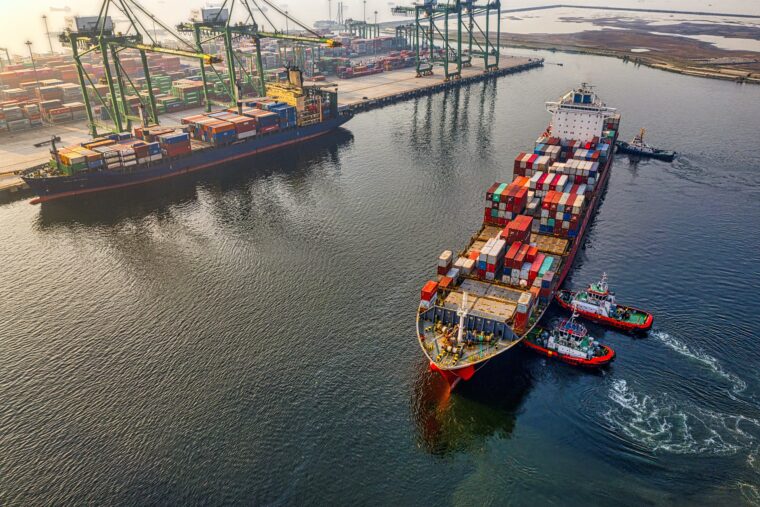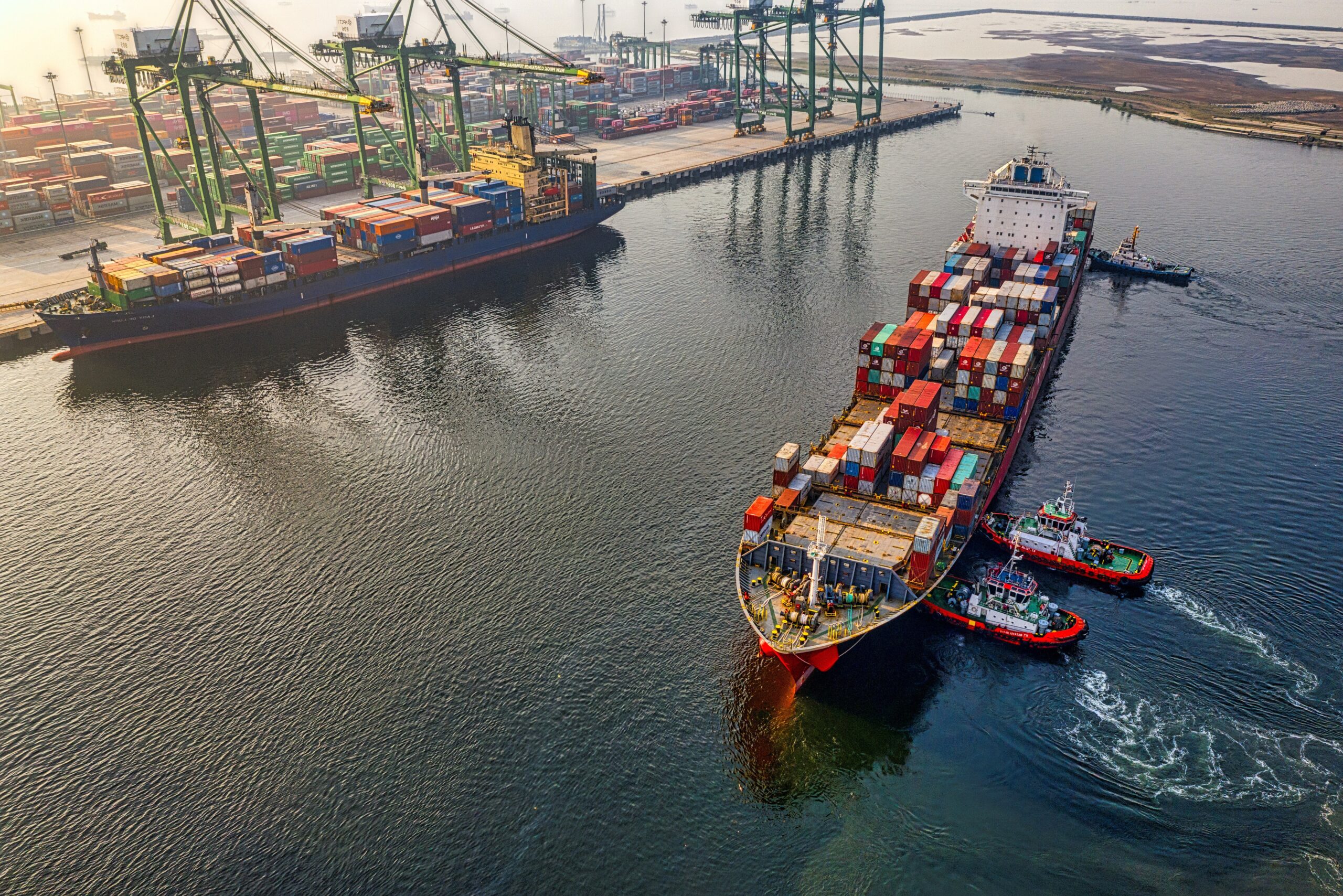
America’s coast hosts more than 300 ports, which are vital to the U.S. economy. Annually, the ports contribute more than $5 trillion to the country’s GDP. Although port traffic was disrupted significantly by COVID-19, port traffic is greater now than ever.
Before the pandemic, port officials rushed to dredge deeper channels to accommodate new mega-ships. At the same time, ports were also dealing with aging infrastructure and a critical need for upgraded infrastructure, which would allow for handling higher volumes of cargo. Over the last decade, the size of the mega ships arriving at America’s ports has more than doubled.
Projects to deepen port channels are underway or have recently been completed because of the need to service Panamax Ships—those that are too large to fit through the Panama Canal. The US Army Corps of Engineers did most of the dredging work, but the expanded waterside capacity has created an immediate need for landside infrastructure upgrades. Demand is high for everything from equipment, technology, cranes, transport vehicles, roads, railways, bridges and the construction of warehouse facilities.

Photo by william william on Unsplash
Fortunately, funding is available for upgrading the nation’s port infrastructure. The Bipartisan Infrastructure Law provided a long-term $17 billion allocation to support upgrading and expanding port infrastructure. Last week, the U.S. Department of Transportation announced another $653 million in funding for port projects. Most initiatives will be supported by consolidating federal funding with other revenue sources.
The traditional type of port operations has evolved, and there is evidence of impressive innovation at many ports. According to officials, artificial intelligence (AI)will play a significant role as ports maximize operational efficiency to speed up the flow of cargo and reduce wait times for vessels. Since two-thirds of the available wind power is located over deep ocean waters, ports are also beginning to play a key role in deploying and maintaining floating offshore wind energy apparatuses.
Officials at the Port of Long Beach in California will oversee a project to expand the capacity of roads and bridges that are used to move cargo. This will allow rail and truck traffic to accommodate projected increases in cargo throughput and alleviate existing congestion. There are two components of the project. The first involves widening a rail bridge and enhancing its safety by realigning it. The second component calls for upgrades to multiple roadways that must be widened, realigned and improved. Additionally, work will be done on the area’s storm drainage, warehouse facilities, and utilities.
In Washington, the Tacoma Husky Terminal will receive $54.23 million in federal funding to reconfigure the terminal for better truck circulation. The total project cost is estimated at $125.9 million. Currently, in the design phase, the project is scheduled for construction in January 2025. The project will be designed to cover three objectives. First, a plan will be developed to reconfigure the container storage yard. That effort will include relocating utilities, light poles, slot drains, and fire hydrants. The second objective will require the installation of reefer racks and additional power. A reefer rack is a storage container designed to store perishable cargo at freezing indoor temperatures. New utilities and fire protection systems will be added. The third objective will be to relocate some of the port’s support facilities and construct new ones.
The Port of Wilmington in Delaware has secured a federal grant of $50 million to construct a container terminal. The terminal has been planned for several years, but recent funding has created new momentum. Nevertheless, the precise timeline for this project has not yet been confirmed. The container terminal is one component of a larger overall plan to update and expand the Port of Wilmington. Port officials currently have $120 million to work with, and planning documents outline initiatives representing project costs of up to $750 million. Other project plans include constructing a 2,600-foot-long wharf, dredging 3.3 million cubic yards of river sediments, excavating a berth and access channel and adding bulkheading to 3,200 feet of shoreline.
Hawai’i’s Department of Transportation announced it will invest $33.9 million to improve operational efficiency at the Port of Kawaihae. A funding allocation from the U.S. Department of Transportation Maritime Administration will cover approximately 70% of the project’s total cost. The initiative will include widening Kawaihae Road , adding concrete paving over 10 acres of the Port’s cargo yard, implementing 80-foot mast lighting, installing raised transformer pads for additional electrical power pads, and relocating the port office building and maintenance shed. The remainder of the project cost not covered by the PIPD grant will be obtained through revenues received from harbor user fees. Construction is scheduled for 2025.
The Galveston Wharves received an award of $42.3 million from the Texas Department of Transportation (TxDOT) for a proposed $50.1 million project at the West Port Cargo Complex. The project entails overhauling a 1,340-foot-long berth across two open slips and adding about 500 feet of berthing area for cargo and lay ships. Solicitations have not been issued, but construction is expected to begin in 2024. Noteworthy is the fact that the Texas legislature made history in the last regular session by allocating $640 million for infrastructure projects throughout the state.
In Arkansas, a project with an estimated $18.8 projected cost is being designed for the River Valley Slackwater Harbor. When completed, the new harbor will accommodate up to eight barges at a time and feature a 50-foot-wide concrete deck for mobile cranes. Officials have expressed a desire to finalize a contract for construction services within six months so that work can begin by late 2024.
Numerous port projects of all types are anticipated in 2024 and 2025. Most will include technology, light rail, renewable energy components, engineering, and construction services.
